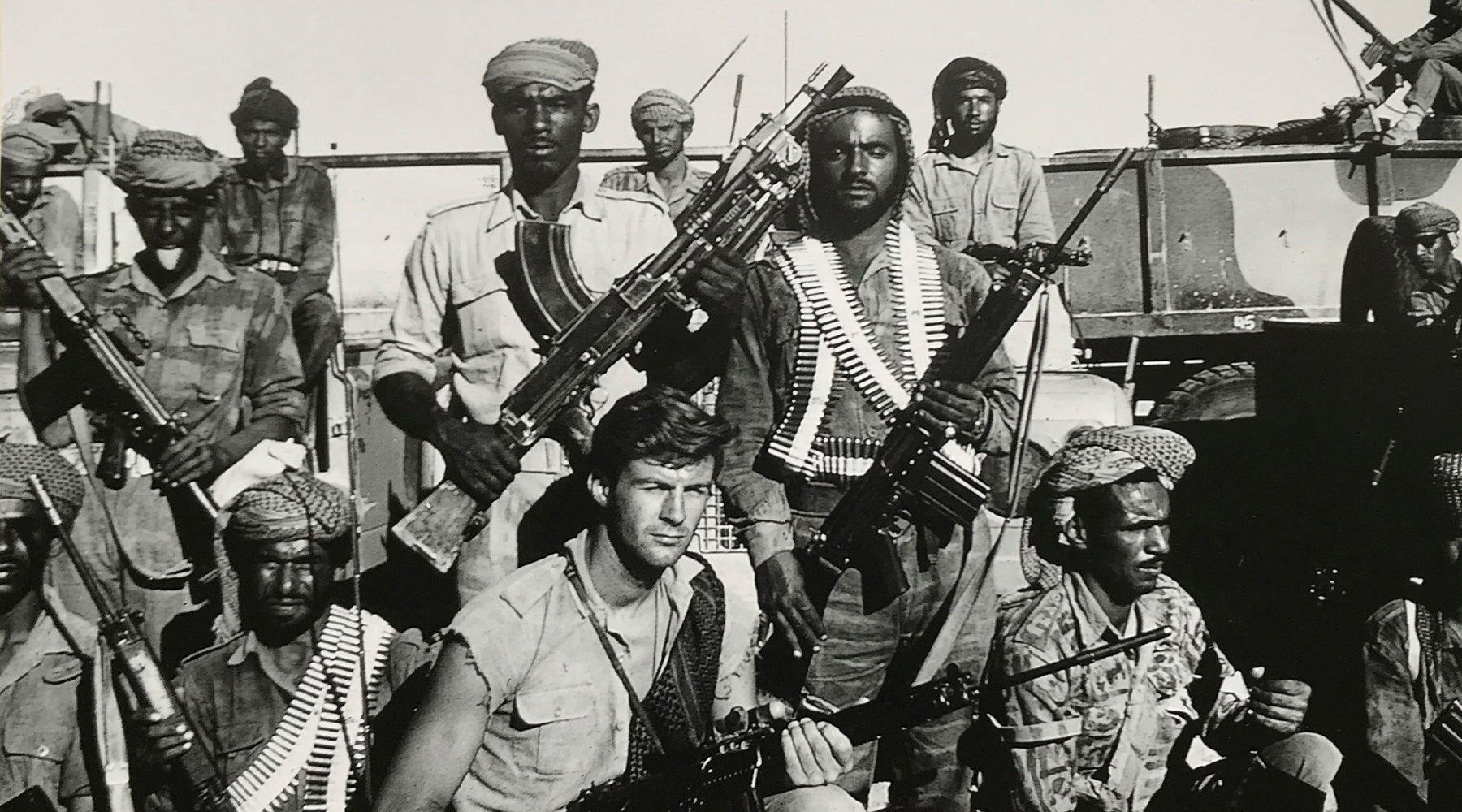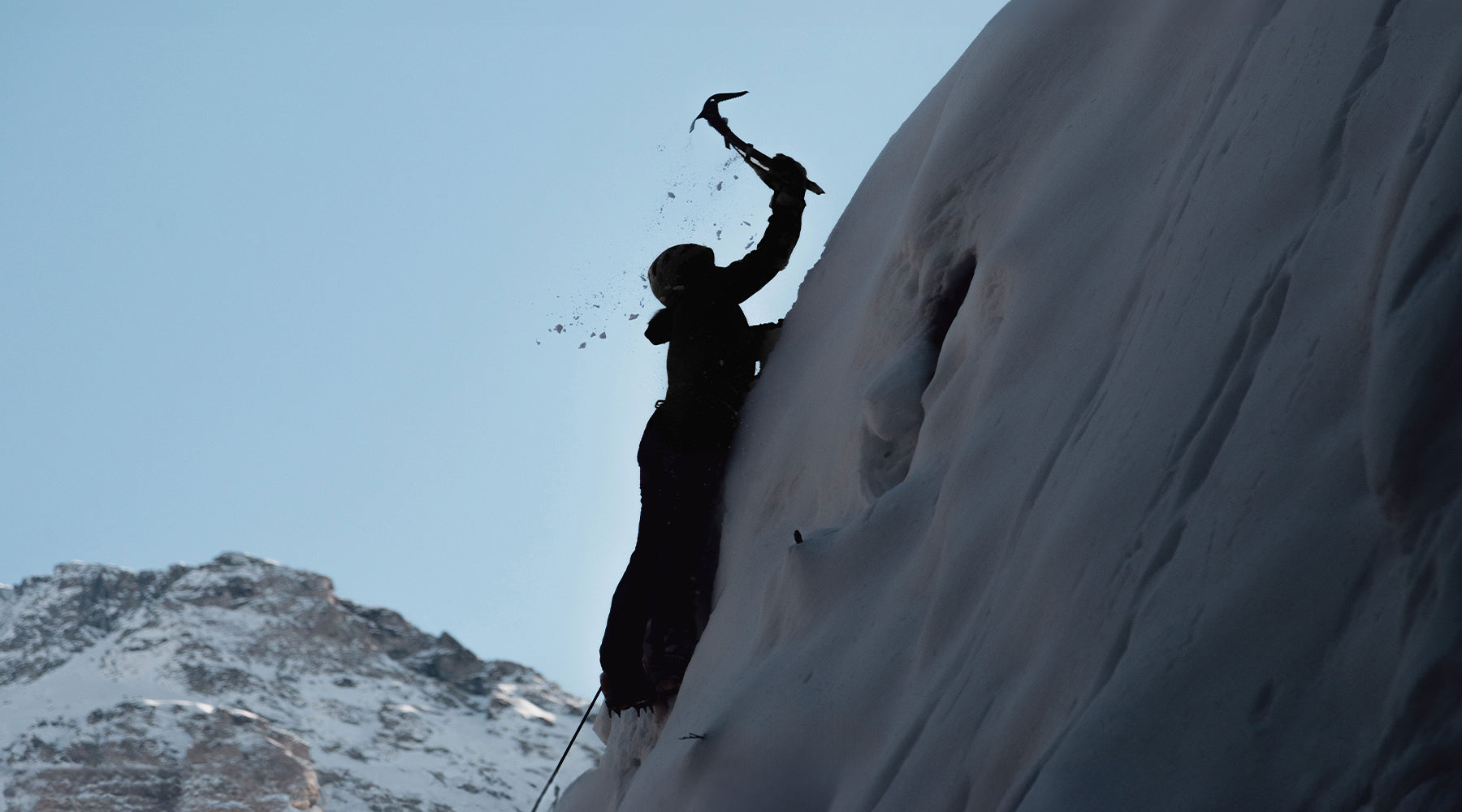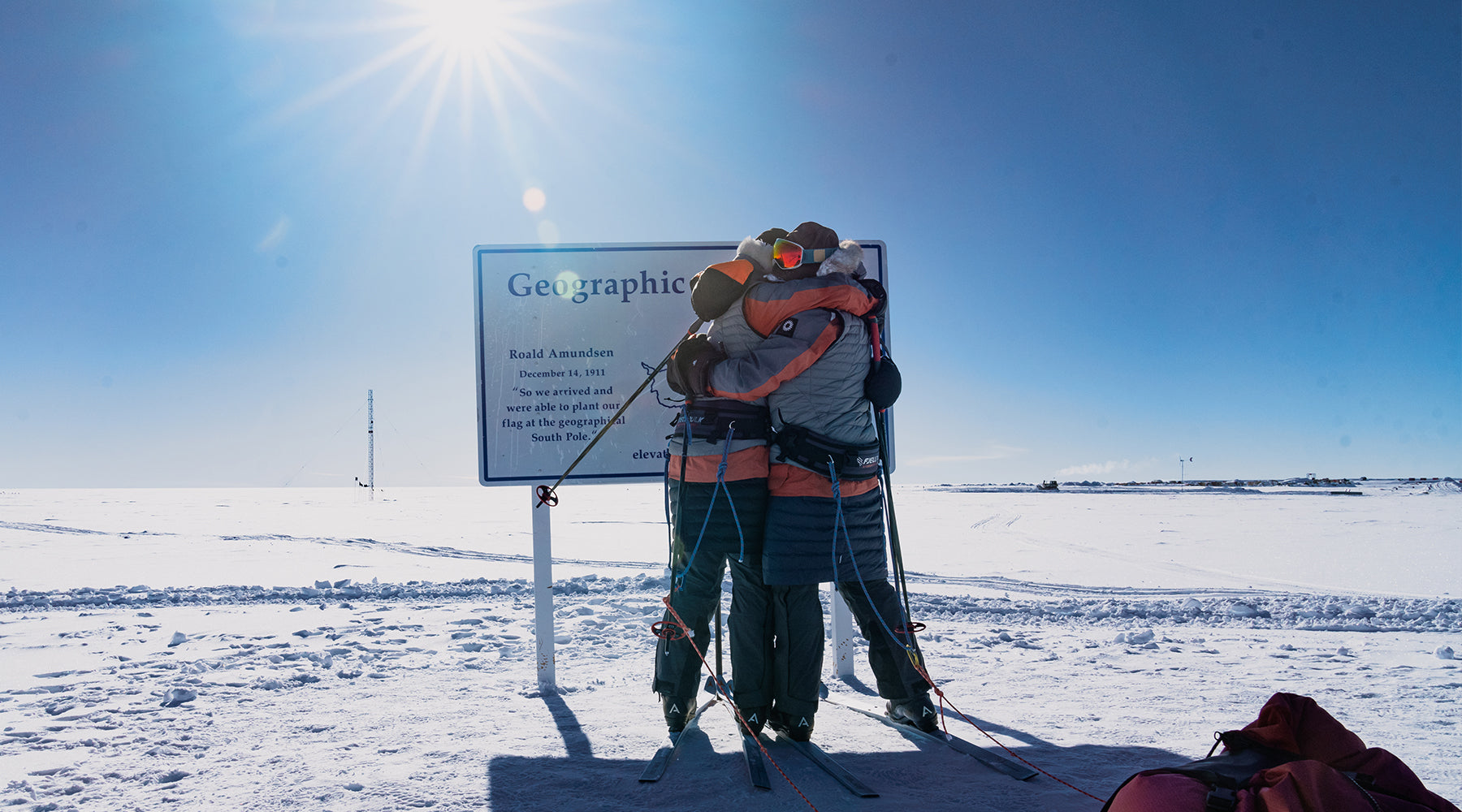
Antarctic Fire Angels // Post Expedition Journal
This Antarctic season Georgina Gilbert and Rebecca Openshaw-Rowe became the first 999 emergency services team to ski to the South Pole. The two firefighters took on a 1230km route from Union Glacier - Constellation Inlet to the South Pole, which had never been skied before. Unguided, unassisted and unsupported. Here Bex and George share highs and lows of this unparalleled experience. They were equipped for the Challenge in the Shackleton Challenger Expedition Jacket and Salopettes and Ross Down Gilet.
Flying in to Punta arenas was a welcome sight after 26 hours of travelling. It’s not until you have to travel to the other side of the earth that you suddenly realise just how away Antarctica actually is. At the bottom of the globe, a sobering thought when the pilot tell you you’re flying upside down! Gathering our 12 heavy and very large bags and pulks from the baggage belt we made our way to the carpark where our driver was waiting. Waiting with a print out of our logo like we were famous people arriving. Arriving at our apartments meant a short respite in travel and the transition to expedition preparation.
We had a week scheduled in Punta which gave us just about the right amount of time to buy our supplies. We pretty much cleared out the supermarkets of dried meat, cheese and chocolate! Back in the apartment, it was time to chop it all up. As you can imagine, this took much longer than we thought, two days in fact! Chopping, bagging and packing it all in to ten day dry bags which, in a small apartment room was a lot to organise with both of us attempting to be as organised as possible.
With only a couple of days delay due to weather on the Union Glacier runway, we received the message that our flight was scheduled for the following day and to be ready for the next morning for an 8am pick up. This was it, we were finally heading to Antarctica after 4 years of planning and fundraising. We then had to meet at ALE HQ to be issued our boarding passes and check all our many bags in ready for departure. 8am arrived, the bus pulled up and we hoped on board and met all of the other expeditioners that were heading out at the same time.
Landing on Antarctica was the most momentous moment of our lives, shedding a tear of emotion as we flew over the landscape that was so huge and intimidating.
Arriving at Union Glacier was a special moment, it really felt like we’d finally arrived and this is where the hard work was about to begin. After pitching our tent, we headed in to the mess tent for some supper and discuss our timeline – decide on when we would leave and chat through weather reports. We decided that we would leave on 21st November at around lunch time. We, of course had the luxury of not having to wait around for a flight as we were skiing straight from UG. Although we would have loved to taken such a unique flight to the grounding line of Constellation Inlet, we didn’t have the finances to fund it so, we had to ski the extra 50km! Buoyed by the fact that no one had ever skied from UG before, we set off at 1pm with a crowd to see us off. This was just as much of a unique moment for them as it was for us as they’d never witnessed anyone leaving like this before!
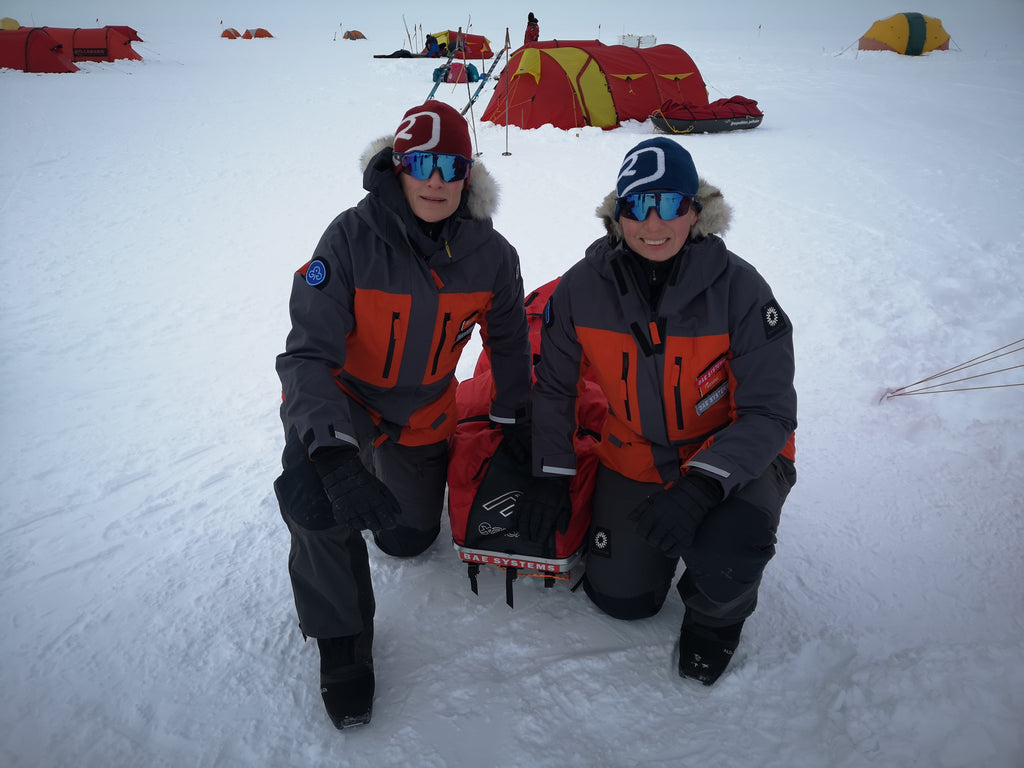
And so, the expedition started. We were heavy, but full of energy and zest and navigation was easy as we had a horizon as far as you could see and no wind to speak of. In fact the first 5 days was actually too warm, a sobering thought for Antarctica to say that it was a sweltering -6 degrees C. After three days we finally reached the grounding line of Constellation Inlet and called UG to inform them we’d started the “official” route for ALE.
After a couple of days and just as we were approaching the start of Hercules Inlet the wind started to pick up and as we climbed up on to the steepest part of the HI, we were met with stronger winds and ivy slopes which, with still heavy pulks, was tough going. After about 900m of climbing, we stopped early for the night and checked out the route and weather for the following few days.
The weather turned foul for us, after being lulled in to a false sense of security during the first week, Antarctica truly showed us what she was capable of. Strong winds, white outs, flat light and sastrugi slowed us right down, barely covering 16km a day. We began to think that we wouldn’t make the final flight cut off date of 18th January. But, we kept plodding and fighting our way through the weather and the sastrugi. Five days later we were rewarded with glorious sunshine. It was always the one of the first things we did every morning, to pear out of the tent door to see if we could catch a glimpse of blue sky. This morning, we did and we immediately felt more positive on progress. It became clear as we got further in to the expedition that the weather seemed to be on a four or five day rotation. When the wind was south to south east we would have sun, a northerly wind brought cloud and white outs. Our estimation is that we spent 50 percent of the expedition in a white out!
Week three, and the weather finally broke and we had several days in glorious sunshine. We started to make great progress and before we knew it we were covering 25km a day, despite the soft snow conditions and huge sastrugi. It was at this point that we started to have glimpses of other peoples ski and pulk tracks. Just now and then we would see evidence of other expeditions, previous tent pitches etc which, in a landscape as big as Antarctica is a bit of a strange one! Yes we are following the same compass bearing but you can be 50 or 500m from the closest track and never come across it! The tracks started to get more fresh and a few days later we saw some very small figures on the horizon and we wondered who they could be. After a couple of days we finally caught up with them and it turned out to be Dave and Al, two retired Royal Marines. We also saw, in the distance the Electric car expedition that had travelled from the North Pole and at Thiel Corner, we bumped in to the Finnish team at their resupply. After these encounters, we didn’t come across anyone else until we arrived at the pole. Not even tracks. With fresh spindrift and dunning, all evidence that there was anyone else out here with us, somewhere was erased over night!
Every degree that we travelled through seemed to have it’s own characteristics but the one thing they did have in common was the sastrugi, from short and spikey that you knew would hurt if you fell on it to huge rolling lumps, shaped by the wind which we at times over 6ft high. Negotiating either versions in white out and flat light was hazardous. Constantly thinking and assessing the risk of injury and breakages of equipment. It certainly played on our minds every moment.
Reaching the last degree brought a mixture of emotions. We had always intended to try and complete it in four days, we did in three and a half days which hurt, a lot! We left ourselves 36km to do on the final day. But, with little adrenaline we had left and running on what felt like fairy dust, we kept going on the final day. We caught a glimpse of the pole at 20km out and then quickly lost sight of it again until 7km out where we met a different type of expedition in monster trucks! – We polled at 11.30pm and were met by the camp manager Cedar and pointed in the direction of the Geographic South Pole where our epic expedition would come to an end.

Hit by many feelings, emotions and thoughts, dealing with endings in this particular context was a tough one to swallow. After 4 years of planning, it ended at this moment in time, at the South Pole.
The first fresh meal and beer went down very well indeed!
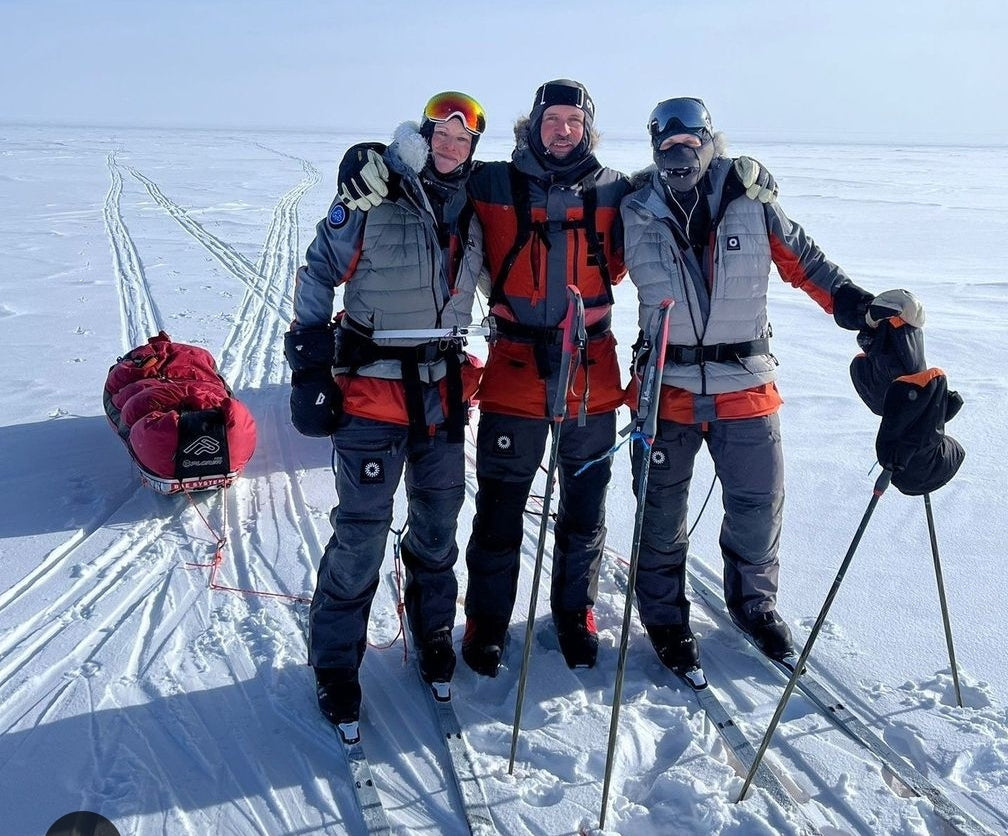
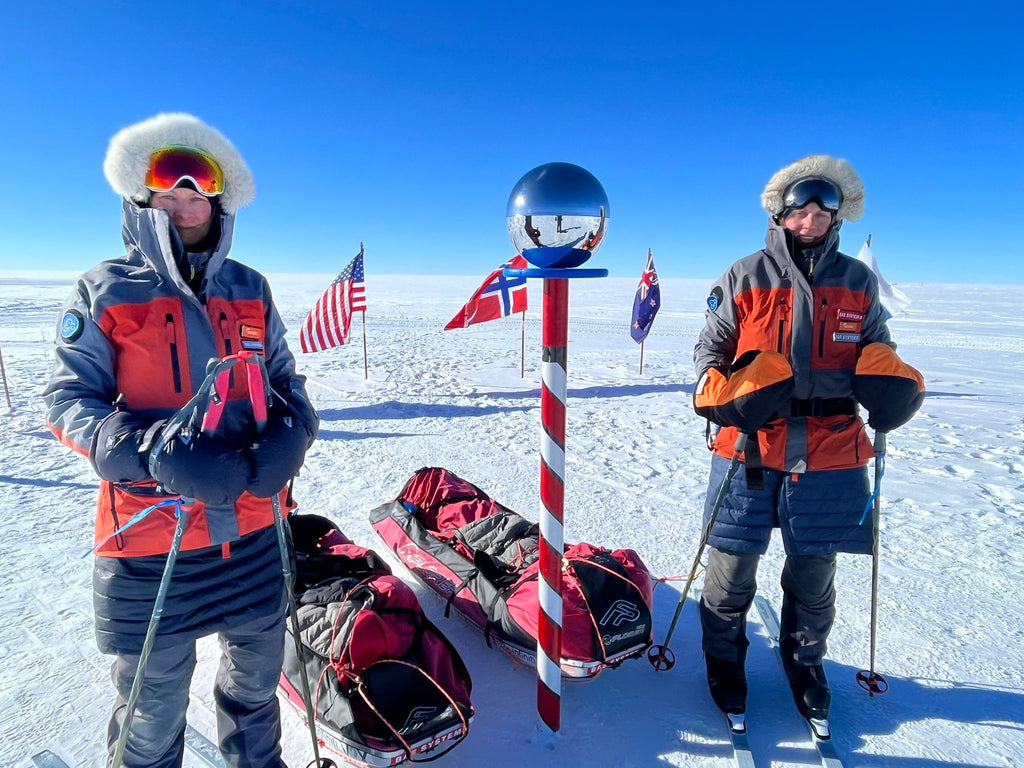
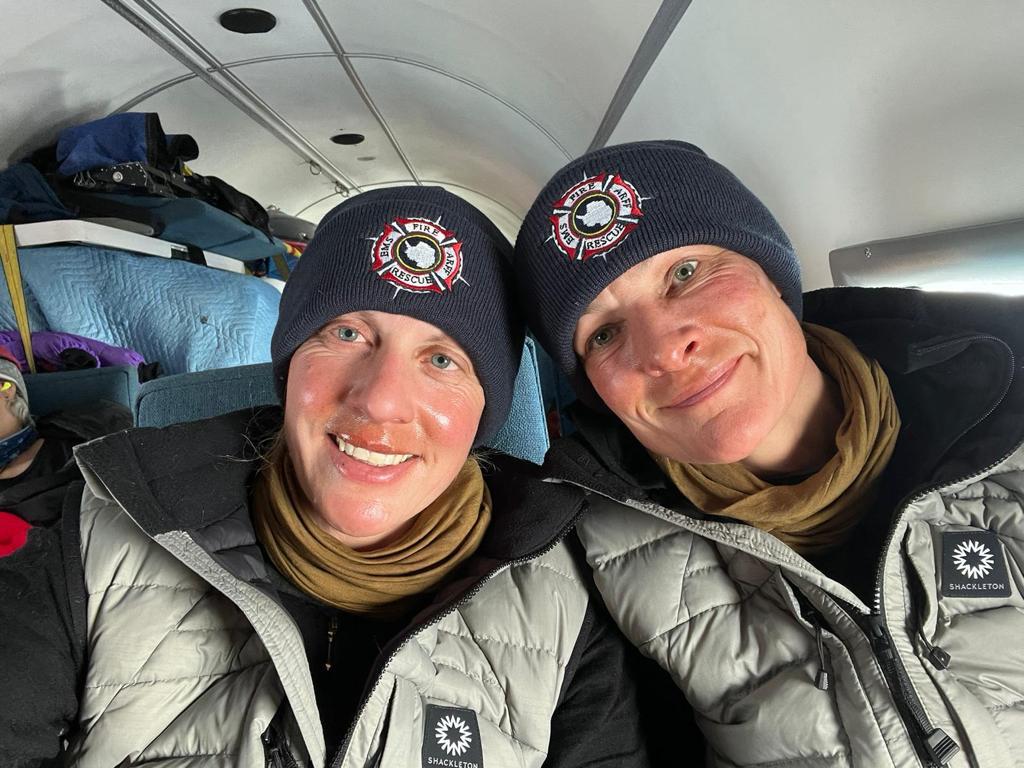
You can listen to the daily updates from the expedition on the Antarctic Fire Angels expedition page here.
